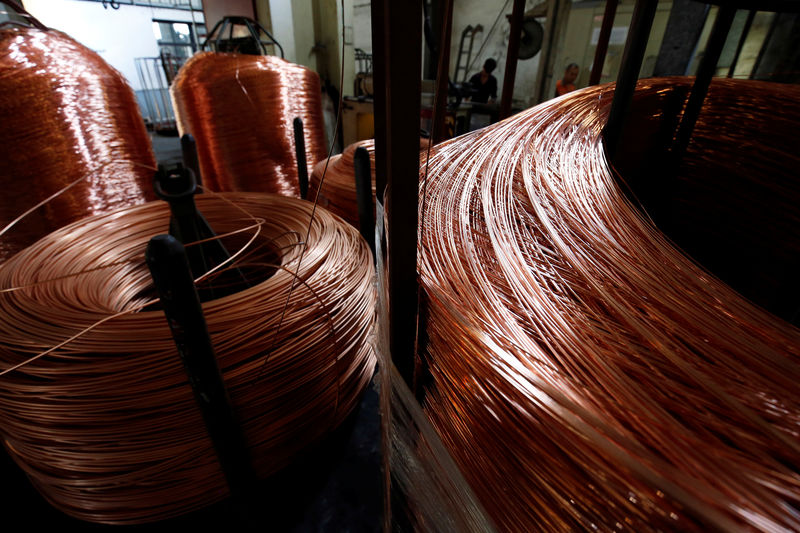Investing.com-- Copper prices are set to see some near-term volatility after surging to record highs in recent sessions, Morgan Stanley (NYSE:MS) analysts said in a note, although the red metal is still expected to push higher this year.
A mix of strong demand-supply fundamentals and outsized speculative trading drove stellar gains in copper over the past few sessions, putting prices at lifetime highs.
Bulls expect copper demand to increase in the coming months amid a greater global push into green energy and electrification, and that copper mines will be unable to meet this increased demand.
This notion was a key driver of copper gains, and also triggered a short squeeze on the Comex, which furthered copper’s rally. Benchmark copper futures on the London Metal Exchange hit a record high of $11,101.50 a ton on Monday.
But copper prices fell sharply from these records on Tuesday, with MS analysts stating that the red metal was set for some near-term volatility after the abrupt gains.
Still, they expect the red metal to rally further in 2024, and presented a bull case of $13,125 a ton for LME copper, along with a base case of $10,500 a ton.
MS analysts said the physical copper market was likely tighter than initially anticipated, especially amid low U.S. inventory and staggered China shipping.
The growing popularity of artificial intelligence, and the industry’s large energy requirement is also expected to drive up copper demand. Copper plays a key role in electricity transmission infrastructure.
“We remain bullish on copper as persistent supply challenges widen our deficit for 2024,which looks set to persist into 2025. Demand and narrative tailwinds from data centres/AI should also boost participation, with long positioning rising,” MS analysts wrote in a note.
China is the world’s biggest copper importer, and is expected to see an economic rebound in 2024 on sustained stimulus support from Beijing. Such a scenario is expected to push up the country’s appetite for copper, although weakness in the property market may limit its demand.
